Categories: Auto electrician
Number of views: 1355
Comments on the article: 0
Spark plug device
In gasoline internal combustion engines, spark plugs are used to ignite the air-fuel mixture. An electrical discharge with a voltage of thousands of volts occurs between the electrodes of the spark plugs at each cycle of the engine, and at certain times ignites the fuel-air mixture inside the cylinder.
For the first time, a spark plug, as we know it to this day, was developed in 1902 by scientist Robert Bosch to be powered by a high-voltage magneto, designed in the workshop of his eponymous company. From that moment on, spark plugs began to be widely used in internal combustion engines, and the spark plug device has still not been structurally changed, only the materials used in it have evolved.
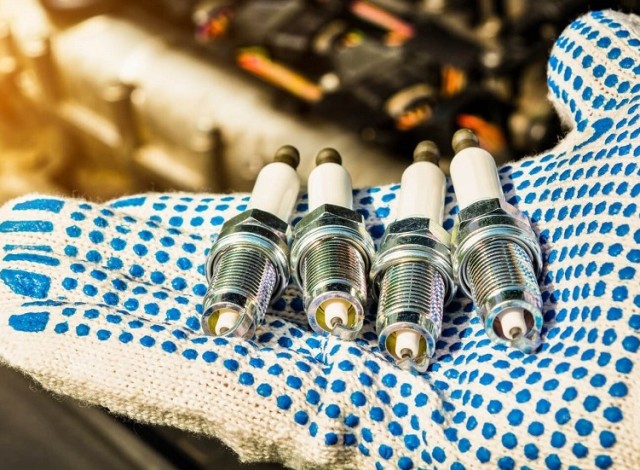
Fundamentally, the spark plug includes the following main elements: a metal casing, an insulator and a central conductor. Some candles additionally contain a built-in resistor between the central electrode and the contact terminal. In any case, three modified elements are the basis of any spark plug.
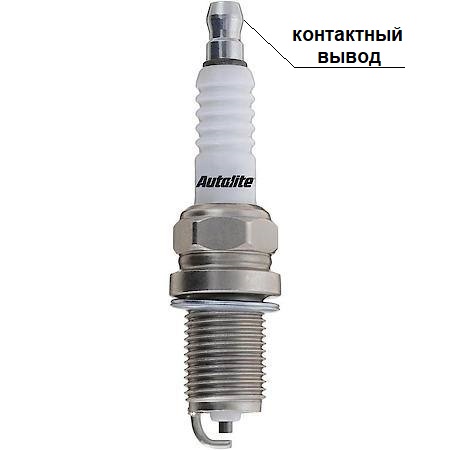
At the top of the candle is a contact terminal, to which the high-voltage wires of the ignition system or a separate high-voltage coil are connected. Designs may vary, but more often a snap-on contact is fixed on top of the candle or fastened with a nut. Usually the central conductor’s output to the contact terminal is universal: the snap-on contact is mounted on the thread and, if necessary, is easily unscrewed.
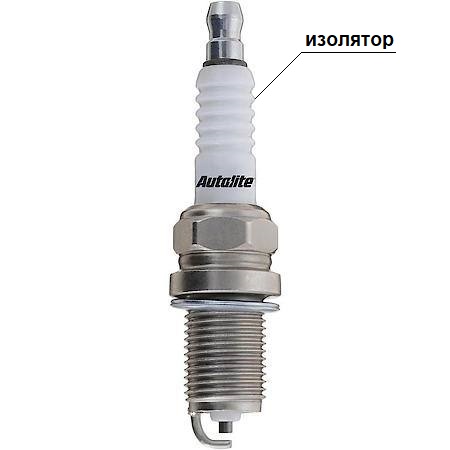
The candle insulator is usually made of aluminum oxide ceramic, the heat resistance of which reaches 1000 ° C, and the breakdown voltage is at least 60 kV. It is the composition of the insulator and its dimensions that determine the thermal marking of a particular candle. The most important is the upper part of the insulator, which is in direct contact with the electrode, it determines how well this candle will work.
On the edges of the insulator made extending the path of the current ribs to complicate electrical breakdown on its surface. This solution is equivalent to lengthening the insulator. The idea of using ceramics in the construction of a high-voltage spark plug belongs to the German engineer Gottlob Honold.
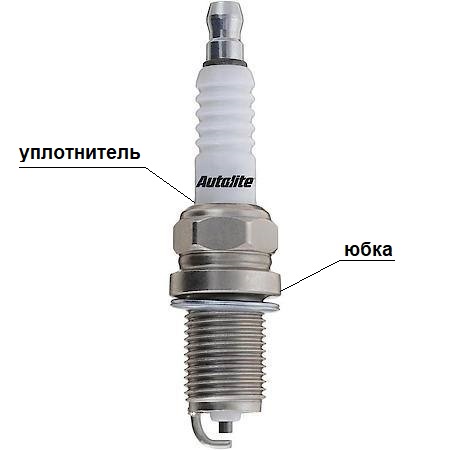
The basis of the candle body is the so-called “skirt”, which serves to install and fix the candle on the thread in the cylinder head, as well as to remove heat from both the insulator and the electrodes. The skirt conducts an electric current between the side electrode of the candle and the "mass" of the vehicle's electrical system. A gasket is installed above the skirt to protect against breakthrough of combustible gases from the combustion chamber to the outside.
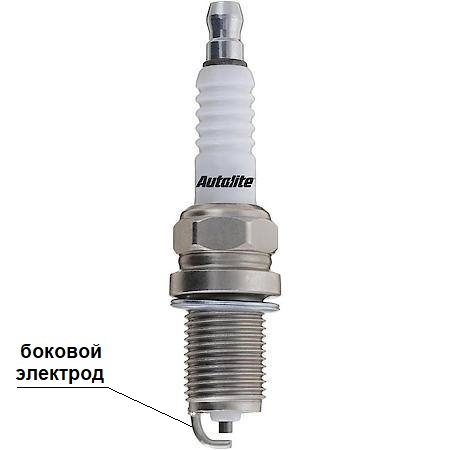
The side electrode of the candle is made of steel alloyed with manganese and nickel. It is welded to the body of the candle by resistance welding. This electrode is always very hot during operation of the internal combustion engine, which can lead to glow ignition. Some candles have several side electrodes.
Durability of these electrodes can be given if they are coated by spraying from noble metals such as platinum - in this way they make more expensive candles that can last 100,000 kilometers, which is sometimes beneficial, because in V-shaped engines replacing a candle is a very time-consuming process.
The candle body itself can also play the role of a side electrode; since 1999, such candles have appeared on the market under the name plasma-prechamber spark plugs. They are equipped with a special heat-resistant spherical nozzle.
The spark gap in such candles is circular, and the electric discharge moves here in a circular path, and the primary ignition of the air-gas mixture occurs in the prechamber. This solution provides self-cleaning of the electrodes, as they are constantly blown, which ensures the extension of the life of the candle. How effective prechamber candles are still a moot point.
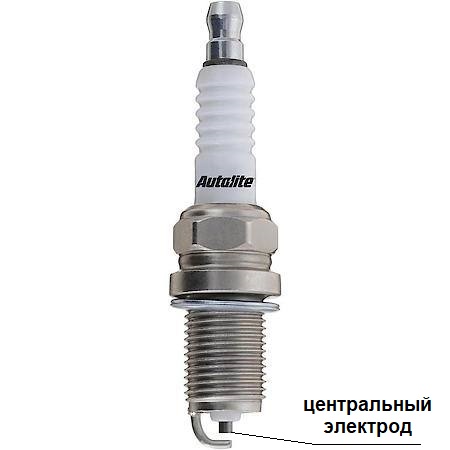
The core of the spark plug is the central electrode. It is connected to the contact terminal of the product through a glass sealant with a resistor. This is to reduce radio interference caused by the ignition system. The central electrode is equipped with a tip made of iron-nickel alloys with the addition of chromium and copper. Yttrium may be sprayed, platinum soldering may also sometimes occur, or the electrode may be refined and made entirely of iridium.
The central electrode of the spark plug is, in principle, its hottest part. In addition, he must ensure the proper level of electron emission so that a spark appears on it, like on the cathode, easily.
Since the electric field has a maximum intensity at the edges of the electrode, a spark is formed precisely between the sharp edge of the central electrode and the edge of the side electrode, therefore, in these places the greatest effect of electrical erosion is observed.
In the old days, it was customary for motorists to take out candles from time to time and clean off traces of erosion from electrodes. Now the problem is prevented by the alloys used in the tips (platinum, yttrium, iridium), which provide the electrodes with an extended service life.
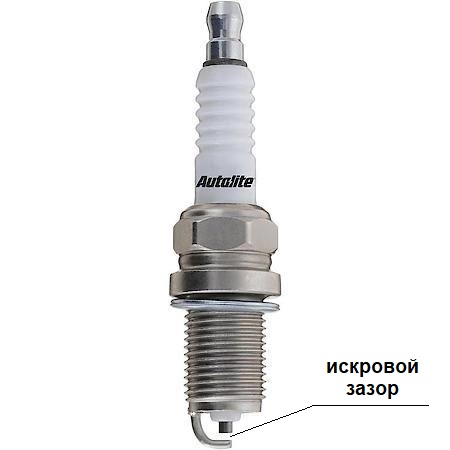
The distance between the side electrode of the housing and the central electrode of the candle forms a gap for the spark. The size of the gap is a compromise between the ability to break through a gap in a compressed air-gasoline mixture and the volume of plasma that occurs during breakdown. The wider the gap - the larger the spark, the higher the probability of ignition of the fuel mixture, the lower the requirements for fuel quality.
But too much clearance can lead to breakdown on the slider, on the wires, and on other parts of the car. A wider gap is more difficult for a spark to break through, and it will tend to tend to seep through the insulation.
The larger gap requires more voltage for normal sparking. However, the ignition system has a constant voltage value, but the gap at the spark plug can, in principle, be changed. In addition, the sharper the electrodes, the easier it is for high voltage to break through the gap. But the higher the pressure in the fuel mixture, the harder it is to break through the gap. A compromise is also needed here.
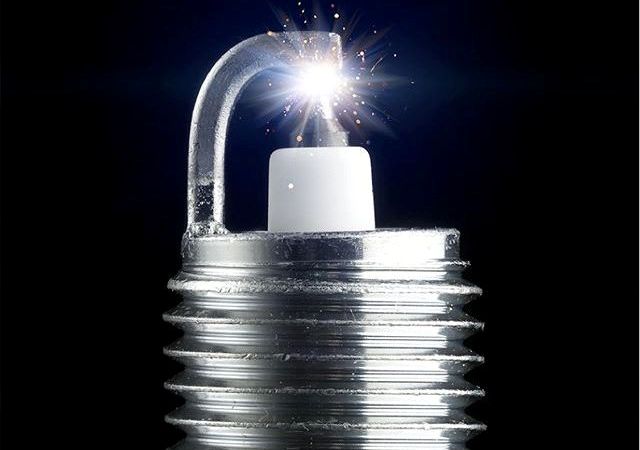
The clearance of the spark plugs is not a constant value set once. It must be adjusted to the specific current operating mode of the engine. When converting a car to liquefied and compressed gas, the spark gap is reduced due to a higher breakdown voltage than the air-gas mixture.
See also at i.electricianexp.com
:
